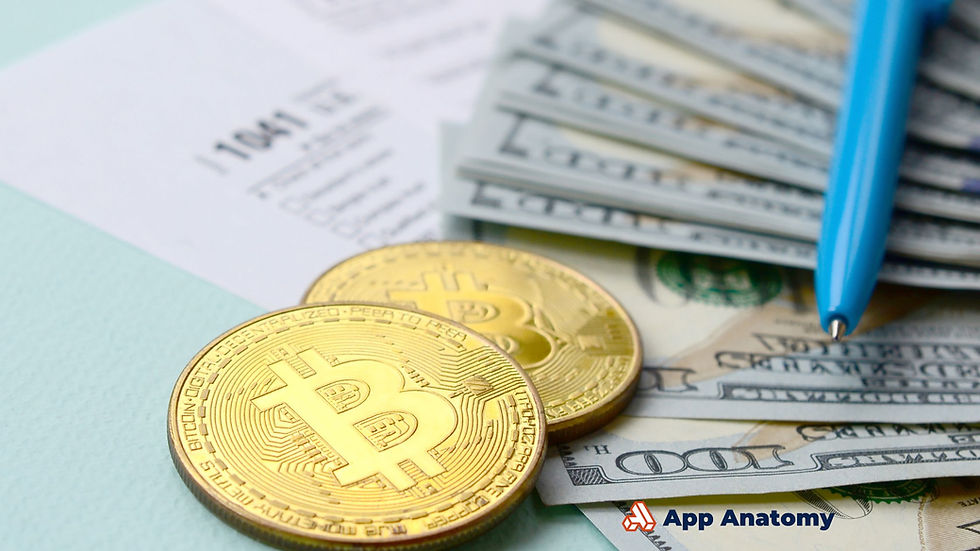Is Crypto the Future of Money or Just a Temporary Trend?
- Jun 30
- 4 min read

We’ve come a long way from trading cows and seashells. Money has evolved from coins and paper bills to credit cards and mobile apps.
And now? Cryptocurrency has entered the chat and it’s shaking up how we think about value, payments, and control.
Some people see crypto as the future of finance. Others think it’s too unstable, too unregulated, or too complicated to be more than a niche trend. So who’s right?
What You Will Learn In This Article
How money evolved from barter systems to credit cards and digital wallets
What makes cryptocurrency different from traditional money like dollars or euros
The pros and cons of using crypto as everyday currency
Why volatility, regulation, and security concerns still hold crypto back
Real-world examples like El Salvador, stablecoins, and CBDCs in action
What the rise of crypto means for the future of global finance and money systems
The Evolution of Money and Where Crypto Fits In
Before money existed, people bartered, trading goods and services directly. But bartering had problems. What if the other person didn’t want what you had? Money solved that.
From gold coins to paper bills to fiat currency (money backed by governments rather than physical assets), we’ve developed systems to make buying and selling easier.
Fast-forward to today, and digital payments are everywhere: credit cards, PayPal, Apple Pay, Venmo. We already live in a mostly cashless world.
Enter Crypto: A New Type of Money
Then came Bitcoin, digital money that doesn’t need banks or governments to exist. Instead of being printed or minted, it’s mined and tracked on the blockchain, a public, secure, and transparent digital ledger.
Crypto isn’t just “internet money.” It offers features traditional money doesn’t:
Decentralization (no central authority)
Global access (anyone with internet can use it)
Fixed supply (many coins can’t be printed endlessly)
But does that mean crypto is ready to replace the dollar, euro, or yen?
Crypto vs. Traditional Money: What Sets Them Apart?
Let’s break down the key differences between cryptocurrencies and the money we’ve used for decades.
Decentralization: No Middlemen Needed
With traditional money, governments and central banks are in charge. They print money, set interest rates, and control the money supply.
Cryptocurrencies like Bitcoin run on peer-to-peer networks. There’s no single authority. Transactions are verified by miners or validators, not banks.
That gives users more control, but it also means no safety net if things go wrong.
Supply: Fixed vs. Flexible
Most national currencies can be printed in unlimited amounts. Central banks create more money when needed, especially during crises.
In contrast, many cryptos have a fixed supply. For example, Bitcoin is capped at 21 million coins, which can’t be changed.
This makes crypto resistant to inflation, but also less flexible during economic downturns.
Borderless Payments
Crypto doesn’t care about country borders. You can send Bitcoin or Ethereum across the globe in minutes, without needing a bank or money transfer service.
That’s a huge deal for people who send remittances, do international business, or live in areas with unstable currencies.
Volatility: The Double-Edged Sword
The biggest downside? Crypto prices swing wildly. One Bitcoin might be worth $50,000 one month and $30,000 the next.
That makes it hard to use as everyday money. Imagine going to buy groceries and realizing your crypto wallet just lost 20% of its value overnight.
The Pros and Cons of Using Crypto as Real Money
The Benefits
Lower Transaction Costs: No banks or payment processors means fewer fees, especially for international payments.
Financial Inclusion: Crypto gives access to money systems for the unbanked, especially in developing countries.
Resistance to Manipulation: With fixed supply and decentralization, crypto is harder for governments to manipulate or devalue.
The Challenges
Not Widely Accepted: You can’t pay for groceries, rent, or gas with Bitcoin in most places, yet.
Regulation Is Unclear: Laws vary from country to country. Some welcome crypto, others ban it.
Security Risks: If you lose your private key (your crypto password), you lose your money. There’s no “reset password” button. And scams are common.
So while crypto has promise, it’s not ready to replace cash or credit cards just yet.
Where Crypto Meets Reality
El Salvador: Bitcoin as Legal Money
In 2021, El Salvador became the first country to make Bitcoin legal tender. The idea was to help people without bank access and attract innovation.
The result? Mixed reviews. Some love it, but many locals still prefer using cash. And Bitcoin’s price swings have made it risky.
Stablecoins: A Middle Ground
Stablecoins are digital coins tied to real-world money, like the U.S. dollar. Coins like USDC or DAI aim to keep prices stable.
They combine the speed and flexibility of crypto with the predictability of traditional money, making them more usable for daily transactions.
CBDCs: Governments Join the Game
Many central banks are now developing their own digital currencies, called CBDCs (Central Bank Digital Currencies).
These are like government-backed cryptos. They use digital technology but still follow traditional rules. Countries like China, Sweden, and the Bahamas are already testing them.
CBDCs show that governments are paying attention and not ready to be left behind.
Crypto as the Future of Money: What Could It Look Like?
So, is crypto the future of money?
It might not fully replace traditional currency anytime soon, but it’s definitely changing how we think about money. It’s pushing innovation, offering more freedom, and giving people more options.
Maybe the real future isn’t choosing between crypto and fiat, but finding a way for them to work together.
Whether you’re a believer or a skeptic, one thing is clear: crypto is more than just hype. It’s a real part of the global financial future and it’s only just getting started.





Comments